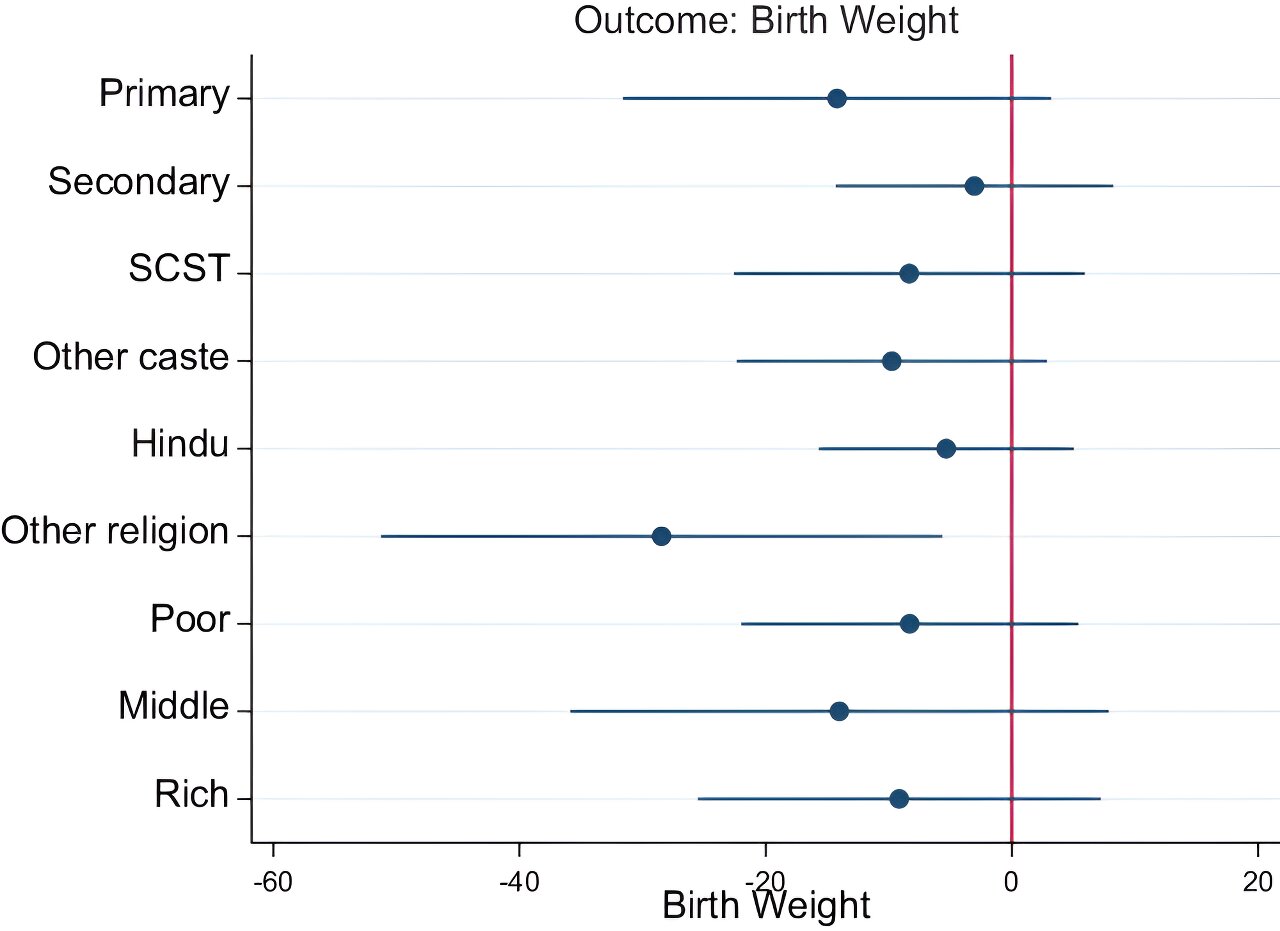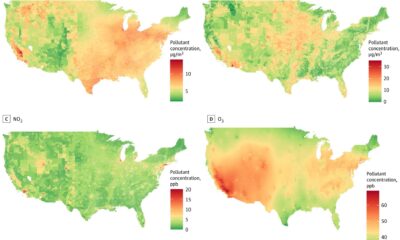Health
Research shows that pandemic newborns in India are likely to have lower birth weights

Stratified analyzes based on mother’s education, caste, religion and family wealth (birth weight). Notes: Linear regression coefficients are reported, bar shows 95% CI. All models adjust for the confounders and district fixed effects reported in Table 2. BW is reported in grams. SCST are Scheduled Caste and Scheduled Tribes who are socially and economically disadvantaged communities. Credit: Communication medicine (2024). DOI: 10.1038/s43856-024-00545-4
Babies born during the COVID-19 pandemic in India were more likely to have lower birth weight (LBW) than babies born before the pandemic. Newborns with LBW are at greater risk for physical and cognitive deficits and behavioral abnormalities later in life.
New research from the University of Hawai’i at Mānoa and the University of Notre Dame shows that the prevalence of LBW was 3% higher during the pandemic (20% vs. 17%). LBW is defined as a birth weight of less than 2,500 grams or approximately 5.5 lbs.
“We suspect that the stress caused by the pandemic, combined with reduced access to healthcare, has likely contributed to the higher prevalence of LBW in India. In addition, the direct impact of the SARS-CoV-2 virus on pregnant women may have played a role. role,” said Tim Halliday, UH Economic Research Organization (UHERO) research fellow and UH Mānoa associate professor of economics.
Halliday added: “The effects of the COVID-19 pandemic on birth weight in poorer and middle-income countries such as India are likely to be more severe than in richer countries. For example, the evidence suggests very moderate effects in the United States. Furthermore, interpreting these findings requires a lot of nuance. In particular, we are not aware of any national survey in the US, based on the universe of births before and during the pandemic, that documents large increases in LBW.”
The scientists analyzed data on birth outcomes during the pandemic (April 2020 – April 2021) and before the pandemic (July 2014 – December 2019). The study included 198,203 babies, of which 11,851 were born during the pandemic and 192,764 before the pandemic.
The researchers examined differences by mother’s education, household wealth, caste (hereditary classes of society) and religion. Significant differences in birth weight were observed based on religion, but not based on maternal education, caste or wealth group. Non-Hindu babies were particularly affected; they showed a decrease in birth weight of 35 grams (about 1.2 ounces) during the pandemic.
“We show that there was an increased risk of low birth weight during the pandemic, underscoring the need for targeted interventions to support maternal and newborn health during future crises,” Halliday said. “Our findings call for a stronger focus on healthcare services to mitigate the negative impact of pandemics on vulnerable populations, especially in low- and middle-income countries such as India.”
The paper is published in the news Communication medicine.
More information:
Santosh Kumar et al, Effects of the COVID-19 pandemic on low birth weight in a nationwide study in India, Communication medicine (2024). DOI: 10.1038/s43856-024-00545-4
Quote: Pandemic newborns in India more likely to have lower birth weight, finds study (2024, July 1), retrieved July 1, 2024 from https://medicalxpress.com/news/2024-07-pandemic-newborns-india- birth weight. html
This document is copyrighted. Except for fair dealing purposes for the purpose of private study or research, no part may be reproduced without written permission. The content is provided for informational purposes only.













